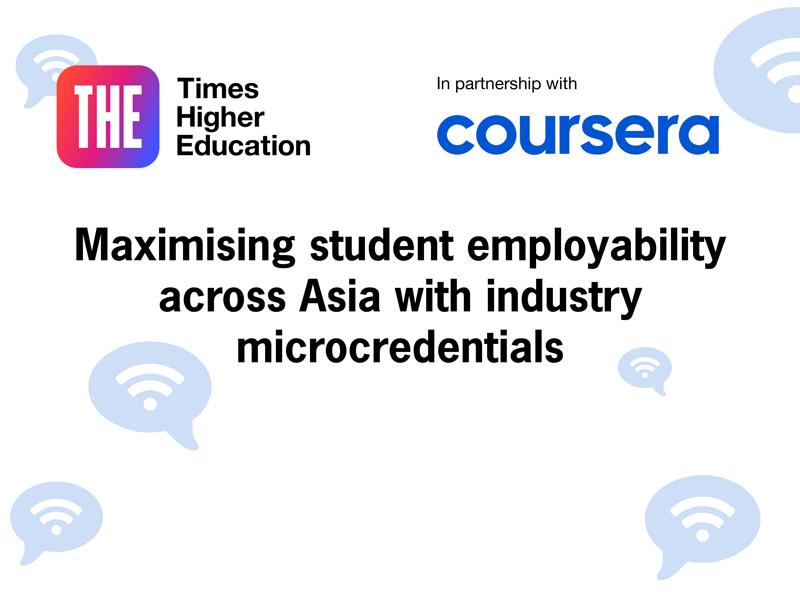
Advancing academic excellence through for-credit online courses in Asia
Universities can support graduates in building skills by integrating industry-focused, for-credit learning materials into courses
Rapid technological advancements have transformed higher education and industry worldwide. The emergence of new jobs and the decline of existing roles are among the consequences of technological advancement. It is increasingly difficult for students to meet fast-changing industry demands, which puts pressure on institutions to equip graduates with the skills they will require for future job opportunities.
A THE webinar, held in partnership with Coursera, featured an international panel of senior leaders across the Asia-Pacific region, who discussed the importance of a skills-first approach in enhancing student readiness and explored how integrating online learning with traditional methods can benefit higher education institutions.
One of the challenges facing institutions is the classroom-workforce graduate skills gap, said Bambang Sektiari Lukiswanto, vice-rector for academic, student and alumni affairs and professor at the Faculty of Veterinary Medicine at Universitas Airlangga. He suggested that getting stakeholders – such as industry, teaching staff and graduates – on board is vital to identifying relevant skills and widening access to affordable courses.
Course Builder, an AI-assisted course creation platform developed by Coursera, enables universities to customise academic modules and curricula, said Ramya Srinivasan, customer success director for universities at Coursera. She added that this offers institutions more flexibility by enabling them to incorporate expert content from Coursera’s catalogue with their own course materials.
Employability is an important factor that motivates students, Srinivasan said. Embedding Coursera’s repository of short courses and microcredentials into curricula for credits in blended and standalone modes can be part of the wider strategy of personalising courses to provide learners with hands-on learning. Since these courses are taught by industry experts, learners can be sure that they focus on the skills the employers are looking for, she added. Moreover, once a senior cohort of students experiences the benefits of for-credit additional courses, others often follow their example. If such courses are part of mandatory credits, students are more likely to complete them. “Both of these push and pull strategies work together to operate this at scale,” she said.
Christopher Dennis E. Catapang, academic dean at the Lyceum of the Philippines University in Laguna, explained that this kind of integration is nascent in the Philippines’ higher education sector. The university is partnering with Coursera to modernise its curriculum design. But having such initiatives in place is not enough, he said. It’s crucial to measure their effectiveness to determine whether they benefit students. “Whenever we adopt something new, we try as much as possible to measure its value along the way,” said Catapang.
Universities must encourage students, teaching staff and industry to co-create courses and align them with the latest industry trends, Lukiswanto said. Equipping faculty and staff with accessible resources and skills is vital to ensuring that relevant courses are effectively embedded into courses, the panel concluded.
The panel:
- Christopher Dennis E. Catapang, academic dean, Lyceum of the Philippines University
- Alistair Lawrence, head of branded content, Times Higher Education (chair)
- Bambang Sektiari Lukiswanto, vice-rector for academic, student and alumni affairs, Faculty of Veterinary Medicine, Universitas Airlangga
- Ramya Srinivasan, customer success director for universities, Coursera
Find out more about Coursera.

